Relief in Store for South Lake Union "Commute Confidence"
/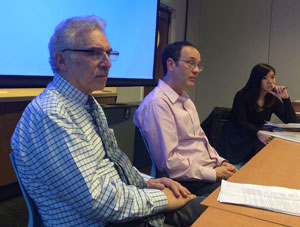 SOUTH LAKE UNION – It’s a frustration that many in South Lake Union face after a long-day’s work; a Metro bus bursting with riders from somewhere else, cruising past its planned neighborhood stop, leaving weary commuters stranded.
SOUTH LAKE UNION – It’s a frustration that many in South Lake Union face after a long-day’s work; a Metro bus bursting with riders from somewhere else, cruising past its planned neighborhood stop, leaving weary commuters stranded.
With high demand for frequent and reliable bus service into and out of Seattle’s burgeoning technology, health sciences research and retail destination, voters offered a breath of fresh air last fall to a neighborhood hamstrung by lack of public transportation service.
“Virtually every Metro route in the (South Lake Union) neighborhood is going to see some service upgrade and meaningful improvement,” King County Metro’s Supervisor of Service Planning, Marty Minkoff told an audience of 25 residents, employees and other stakeholders attending the February 3 meeting of the South Lake Union Community Council at the Museum of History and Industry.
It’s a relief that neighborhood leaders and residents alike are finally seeing since crafting and securing Seattle City Council endorsement of its SLU/Uptown Mobility Plan over six years ago.
“In South Lake Union we’re ready for a solution now,” said SLU Chamber of Commerce volunteer board member, Matt Curry at the meeting attended by Minkoff and Seattle Department of Transportation Program Manager, Bill Bryant.
At stake for the ever growing number of option-savvy commuters along with residents and visitors drawn to the neighborhood’s local shops and restaurants, said South Lake Union Community Council volunteer board member and Transportation Committee Chair, Kyle Ducey, is its so-called “commute confidence” - the ability to overcome overcrowding, unreliability and inadequate service that has plagued public transportation in Seattle’s marquee destination neighborhood.
Relief will come by way of a $45 million annual infusion from Prop. 1’s new vehicle license fee that will allow the city to purchase additional transit service from Metro through a contract agreement with the City of Seattle signed last week.
“There are so many needs out there it wasn’t hard to put together a proposal,” Minkoff told the community council gathering.
For South Lake Union’s commuters -- many who represent an age group not interested in climbing into a car and battling gridlock that comes at the confluence of Seattle’s growing popularity and its hills, waterways and highways, the additional 223,000 annual service hours that will begin to be rolled out city-wide this June is welcome.
“There’s a convenience to a car, but if you want to live in an urban neighborhood, a car can become a nuisance,” said architect and South Lake Union Community Council volunteer board member, Jim Goodspeed, who moved to Seattle after spending nearly a decade during the late 1990s in transportation-rich Chicago.
“Chicago had the perfect combination of rapid transit and day-to-day bus service,” said Goodspeed, 45, who along his wife Stacy Segal, settled near the heart of the neighborhood and anticipated transportation connections.
“The combination of the two is critical to having the confidence to give up your car. We hope Seattle will get there,” he said.
Getting there means putting to work the city’s expected tax-base infusion of just over $512 million through 2022 from new development and subsequent occupation of buildings taking shape in South Lake Union.
With public transportation options in the neighborhood significantly lagging behind demand, South Lake Union community leaders are eager to see antiquated bus routes retooled along with new service put into place.
“We’re making progress,” said South Lake Union Community Council President, Mike McQuaid. “But residents and the workforce are telling us we still have plenty of work to do.”
On any given day South Lake Union is largely bypassed by the 30 buses that enter Aurora Ave. (SR 99) at Denny Way during the 4:30 – 5:30 p.m. evening commute, while just six Metro bus routes along with a single Rapid Ride line and the Seattle Street Car struggle to move an estimated residential and workforce population that is expected to top 50,000 by year’s end.
“Before they were saying you don’t have the ridership, now we’re bursting at the seams with potential riders. And ridership is being lost due to lack of options and facilities,” Curry said.
And that doesn’t incentivize a break with old habits, including the high percentage of commuters that choose to drive alone to work in South Lake Union.
Despite overall progress for central Seattle where just 31 percent of commuters drive to work alone, the neighborhood has some catching up do.
According to the 2014 Commute Seattle Mode Split Survey released Wednesday, South Lake Union, with its mobility-progressive workforce, has a “Drive Alone” rate of 46 percent, lagging well behind the 23 percent of the more conservative Downtown Commercial Core.
“It’s concerning,” said Curry, who still expects to see the neighborhood come in line with its 2017 goal of 40 percent of single drivers in cars.
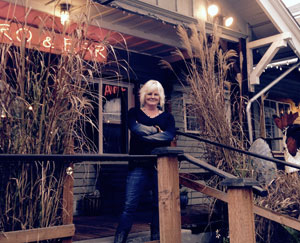
“To just reach that goal, we need transit infrastructure to help people get to work,” said Curry, who regularly sees routes such as Metro’s Route 40, with service from Third Ave. South and Main Street Downtown to Northgate, so full that it bypasses stops in the heart of South Lake Union overflowing with commuters from Amazon.com, University of Washington Medicine, Fred Hutchinson Cancer Research Center and others waiting for a ride home.
“If you can’t get on the bus you can’t get home – or to work. It hurts both commuters and employers,” Curry said.
For Bryant, that opens the door to helping commuters already relying on bus service, while giving others the confidence to get out of their cars.
“Prior to the passing of Prop. 1 this fall, what had been a ‘save Metro package’ quickly became a ‘how to enhance Metro package’,” he said.
Among the tangible improvements South Lake Union commuters can expect to see from Metro beginning in June includes more buses running more frequently on 13 separate routes.
That includes the reinstatement of a total of 458 trips on each of nine days that currently run reduced weekday schedules and more routes running every 12 – 15 minutes especially from 7 p.m. on – after the traditional evening commute.
The “40” is one of the Metro routes slated for adjustment improving its reliability and minimizing overcrowding. Fine-tuning that could bump its frequency to about every 15 to 30 minutes.
The Rapid Ride system, now with just one SLU stop, will also see enhancements including “more buses to get you downtown and to the heart of the system,” Bryant added. Its “C-Line”, connecting West Seattle to Third and Pike downtown, with buses now running every 6 to 10 minutes, will be extended into SLU next year, with buses running at 6 – 8 minute intervals during peak commute.
Bryant also expects commuters to see improvement in Seattle Street Car service with a traffic analysis underway to determine if a transit lane is needed on Westlake Ave to move the popular new carriages along with buses more quickly to and from the city’s Westlake Transit Hub.
Enhanced service won’t come without concerns, Bryant noted.
“One of the worst things about transit planning is figuring out where to park buses,” he said.
For South Lake Union and neighboring Cascade, streets less than a decade ago -- barren of interest and activity, provided for an ideal, out-of-mind stopover point for Metro, along with buses from Pierce Transit and Snohomish Transit laying over from trips to and from other communities.
With South Lake Union now bustling with local workers, families and visitors, community leaders see an immediate need to put those buses to work.
And to find better-thought-out locations to layover between trips.
The concern was first expressed to King County Council Chair, Larry Phillips during a September walking tour of the neighborhood.
“The long and short of it is that those buses are not servicing our neighborhood,” said Cascade resident and cafe owner, Erin Maher who also volunteers on the board of the South Lake Union Community Council.
“It adds another layer of burden to an already taxed community,” Maher said. “We need to receive some benefit from them.”
For Phillips, one of a number of state, county and city elected officials paying close attention to South Lake Union’s ability to get around, successful mobility means talking to and working closely with community leaders and other agencies.
“There’s no question that the rapid and tremendous growth of South Lake Union has outstripped the transportation infrastructure supporting it,” he said.
A reality also felt by Seattle City Councilmember Sally Bagshaw, in keeping an eye on the needs of what has become known as one of America’s fastest growing communities.
“I am thrilled that South Lake Union’s bus service will increase, helping businesses and residents alike to get around their neighborhood and the entire City more speedily,” she said. “This is critical groundwork for the rapid growth of the neighborhood, and will make a huge difference for years to come.”
For Phillips, the difference-maker is encouraging the region’s transportation leaders to work together – and to think ahead.
“As we continue to grow, it’s absolutely incumbent on our transit agencies to cooperate on how services are delivered in congested communities. But we still need buses at the right times and the right places,” said Phillips, who, after listening to community concerns last fall, helped initiate an inter-agency conversation to begin to address the bus layover issue.
“I’m continuing to push our best thinkers -- including those with the City of Seattle, on mobility,” he added. “We can’t have those new dollars miss the opportunity to service those that need to get to work.”
For Ducey, that means following through on a recommendation of the community’s mobility plan with the development of a centrally located transportation hub that reflects not just the needs of today’s commuters, but tomorrow’s.
“Transportation infrastructure in South Lake Union had fallen so far behind in a neighborhood that is on the leading edge,” he said.
A need that Ducey and other South Lake Union leaders identified as a priority in the SLU/Uptown Mobility Plan is a safe and appealing multimodal transportation hub that engages commuters.
Through development the SR99 North Portal project, he sees this as critical for South Lake Union helping “commuters easily move onto potential east-west bus service, jump into a bike-share or car-share program or easily walk to their work.”
It’s that forward thinking where South Lake Union community leaders envision a transportation nucleus that is representative of how the neighborhood works – and sees itself working.
“We’re aiming for a more convenient, more usable system that works better for all of us, ” Bryant said.
Transportation continues to be a focus for the South Lake Union Community Council as mobility and the impact of Seattle’s Freight Master Plan is on the agenda for the upcoming March 3 South Lake Union Community Council meeting. To learn more visit SLUCommunityCouncil.org.
WHAT: South Lake Union Community Council Monthly Meeting
WHEN: Tuesday, March 3 (4 p.m.)
WHERE: Museum of History and Industry (860 Terry Avenue North, Seattle, WA 98109)
WHY: Meet your neighbors and learn about the impact of Seattle’s Freight Master Plan on South Lake Union and contribute to its refinement, learn more about the progress of the Seattle City Light Denny Substation project impacting South Lake Union’s Cascade Neighborhood, and learn how your group can improve South Lake Union by qualifying for the City of Seattle’s Neighborhood Matching Fund program.
AGENDA: South Lake Union Community Council March 3, 2015 Agenda
LEARN MORE: SLUCommunityCouncil.org
About The South Lake Union Community Council The recognized South Lake Union neighborhood leadership organization by the City of Seattle, the South Lake Union Community Council is the steward of the SLU neighborhood plan and collaboratively with community stakeholders authored the SLU Urban Design Framework and the SLU/Uptown Mobility Plan. The South Lake Union Community Council meets monthly (4 – 6 p.m. on the first Tuesday of every month) at the Museum of History and Industry in South Lake Union. To learn more visit SLUCommunityCouncil.org .



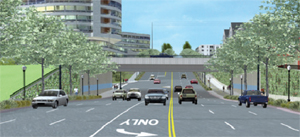 As 2014 draws to a close, construction in Seattle presses on with some help from the three C's: Coordination, Communication, and Collaboration. It's been another boom year, following the 2013 surge—
As 2014 draws to a close, construction in Seattle presses on with some help from the three C's: Coordination, Communication, and Collaboration. It's been another boom year, following the 2013 surge—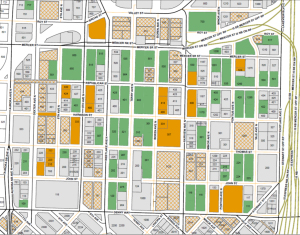
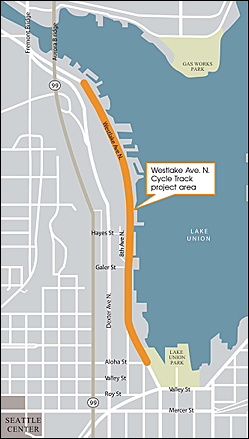 Seattle Department of Transportation has announced a project open house for the Westlake Avenue North Cycle Track project to be held on Wednesday, May 21, 2014. This is the second of three planned open houses for the cycle track project and will focus on the design and potential alignment of the project.
Members of the community are encouraged to attend the open house to review the work to date and provide input on design options. We at the South Lake Union community council will have a representative at the open house, and encourage all those interested to participate as an individual or through the community council.
Seattle Department of Transportation has announced a project open house for the Westlake Avenue North Cycle Track project to be held on Wednesday, May 21, 2014. This is the second of three planned open houses for the cycle track project and will focus on the design and potential alignment of the project.
Members of the community are encouraged to attend the open house to review the work to date and provide input on design options. We at the South Lake Union community council will have a representative at the open house, and encourage all those interested to participate as an individual or through the community council.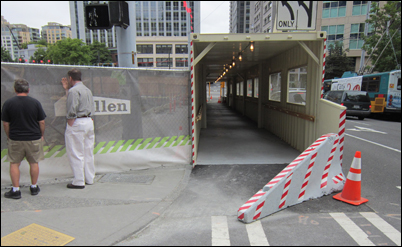 With all of the ongoing construction in South Lake Union, have you ever been frustrated by a traffic lane closure when it looks like nothing is taking place there? Or when walking, found yourself at an intersection and unable to cross the street because of a crosswalk closure? Or while on your bicycle, seeing the bike lane suddenly blocked with heavy equipment and a sign saying "Bikes Merge With Traffic" without much notice? Wouldn't it be nice if projects were coordinated and managed to minimize mobility impacts on our community? I think so!
With all of the ongoing construction in South Lake Union, have you ever been frustrated by a traffic lane closure when it looks like nothing is taking place there? Or when walking, found yourself at an intersection and unable to cross the street because of a crosswalk closure? Or while on your bicycle, seeing the bike lane suddenly blocked with heavy equipment and a sign saying "Bikes Merge With Traffic" without much notice? Wouldn't it be nice if projects were coordinated and managed to minimize mobility impacts on our community? I think so!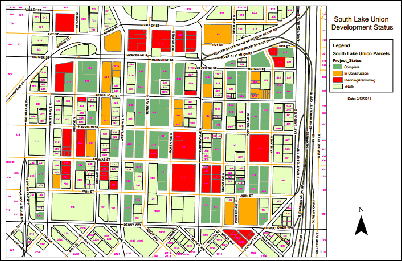
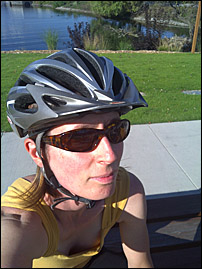 When I'm on my way to or through our South Lake Union neighborhood, getting where I'm going safely is important to me. And given all the hustle and bustle on our city streets, being attentive to safe travel—regardless of mode of transportation— is more important than ever.
In fact, for your South Lake Union Community Council's transportation committee, it's a priority!
When I'm on my way to or through our South Lake Union neighborhood, getting where I'm going safely is important to me. And given all the hustle and bustle on our city streets, being attentive to safe travel—regardless of mode of transportation— is more important than ever.
In fact, for your South Lake Union Community Council's transportation committee, it's a priority!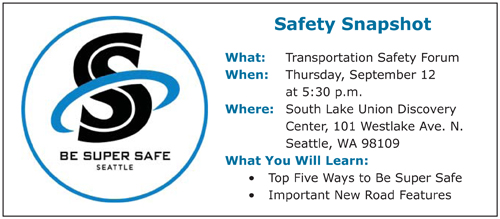 Join us September 12th at 5:30 p.m. at the South Lake Union Discovery Center to help kick off SLU's exciting Look Out for Each Other street safety campaign.
Join us September 12th at 5:30 p.m. at the South Lake Union Discovery Center to help kick off SLU's exciting Look Out for Each Other street safety campaign.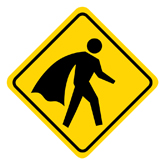 On an average day on the streets of Seattle there are 33 collisions involving people walking, biking, or driving. These crashes snarl traffic and create real headaches for everyone. Crashes are costly, requiring a significant use of public resources. But the biggest impact is on the crash victims—their families, health care costs, lost wages, increased insurance premiums.
On an average day on the streets of Seattle there are 33 collisions involving people walking, biking, or driving. These crashes snarl traffic and create real headaches for everyone. Crashes are costly, requiring a significant use of public resources. But the biggest impact is on the crash victims—their families, health care costs, lost wages, increased insurance premiums.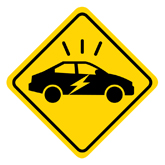 The Be Super Safe Road Safety Forum kicks off its citywide tour on September 12 at the Discovery Center with interactive presentations to raise awareness about what's happening on our city streets, including information about new roadway features like bicycle boxes, collisions in our neighborhood, and the top safety tips for all modes of transportation. This is the information you need to know to Be Super Safe on our street.
The Be Super Safe Road Safety Forum kicks off its citywide tour on September 12 at the Discovery Center with interactive presentations to raise awareness about what's happening on our city streets, including information about new roadway features like bicycle boxes, collisions in our neighborhood, and the top safety tips for all modes of transportation. This is the information you need to know to Be Super Safe on our street.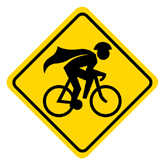 Since we all have a right to use our streets and sidewalks safely, no matter how we choose to get around, it's time we start looking out for one another – building a culture of empathy. The father pushing the stroller across Westlake might be your co-worker; the young woman biking to her Cornish dorm room on 7th Avenue could be your daughter or sister; and the couple driving home to Capitol Hill might be you and your partner. If you knew these folks personally, you would surely give them a safe distance to cross, turn or pass. Well, guess what? You do know them, because they could be you!
Since we all have a right to use our streets and sidewalks safely, no matter how we choose to get around, it's time we start looking out for one another – building a culture of empathy. The father pushing the stroller across Westlake might be your co-worker; the young woman biking to her Cornish dorm room on 7th Avenue could be your daughter or sister; and the couple driving home to Capitol Hill might be you and your partner. If you knew these folks personally, you would surely give them a safe distance to cross, turn or pass. Well, guess what? You do know them, because they could be you!






